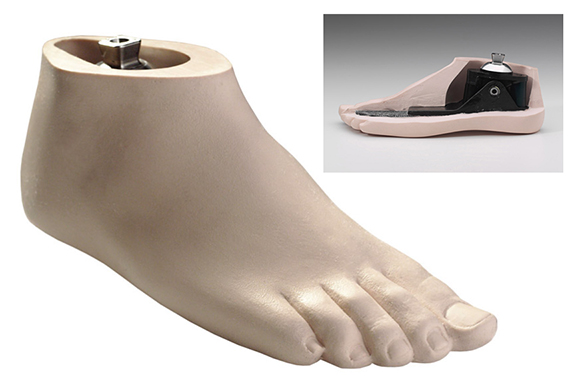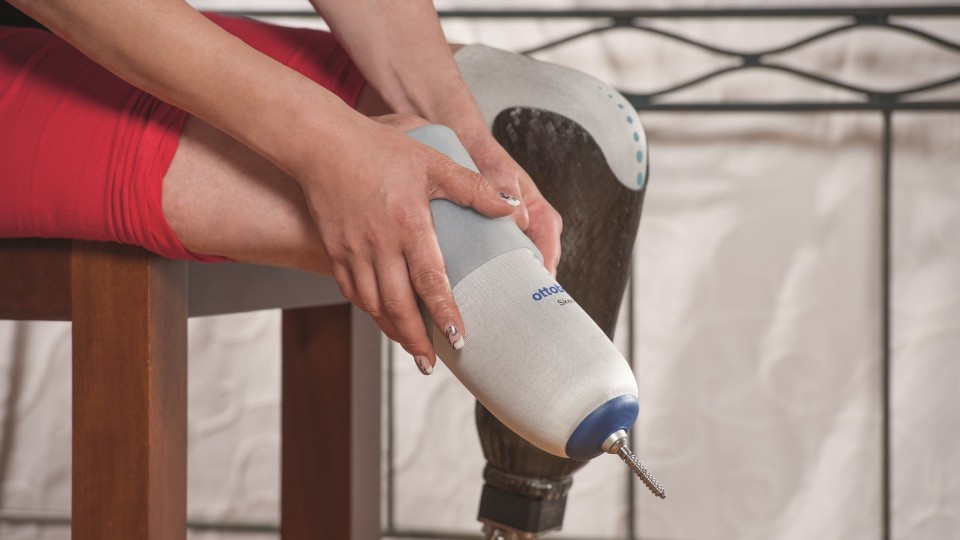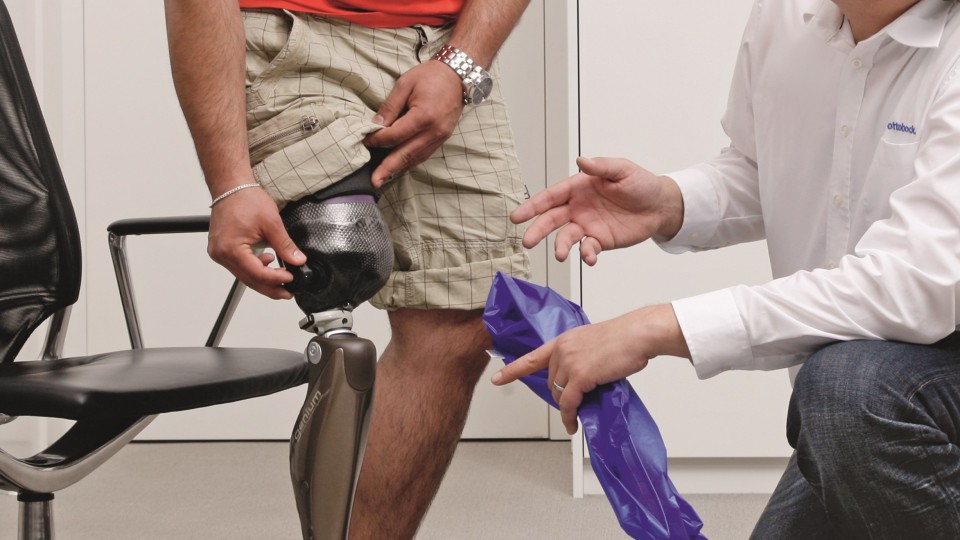Low Activity Below Knee Prosthetics
Designing prosthetic foot systems is challenging. It’s very difficult to reproduce the complex workings of the human foot and ankle. Ideally the foot will be light because its weight is added to the rest of the leg prosthesis. If the foot is too heavy, the suspension system may be affected and with it the connection to the socket and your limb.
A good prosthetic foot should also be strong, as it will be taking on huge force and torque as you walk and run. Feet must also be small enough to fit within a foot shell, a cosmetic covering for the prosthetic foot, and thus fit within a shoe. Being light, strong, and small, and yet functional and durable is the challenge.
SACH Foot
 Early designs for prosthetic feet were often a solid piece of wood. A similar design, the SACH (solid-ankle-cushioned-heel) is still in use because of its sturdy function, especially useful for individuals with lower activity levels. A SACH foot typically has a rigid inner structure (wood or plastic) surrounded by a compressible foam cosmetic shell.
Early designs for prosthetic feet were often a solid piece of wood. A similar design, the SACH (solid-ankle-cushioned-heel) is still in use because of its sturdy function, especially useful for individuals with lower activity levels. A SACH foot typically has a rigid inner structure (wood or plastic) surrounded by a compressible foam cosmetic shell.
https://www.ottobock.com/en-sc/product/1S49
Pin System Suspension
 Made up of a padded liner with a pin at the end. The pin is inserted into a shuttle lock built into the bottom of your socket, the only connection point. One variation for above-knee prostheses, called a lanyard system, uses a strap to pull the liner into the socket. The lanyard also connects the socket to the liner near the top, which slightly reduces rotation and shear.
Made up of a padded liner with a pin at the end. The pin is inserted into a shuttle lock built into the bottom of your socket, the only connection point. One variation for above-knee prostheses, called a lanyard system, uses a strap to pull the liner into the socket. The lanyard also connects the socket to the liner near the top, which slightly reduces rotation and shear.
Suction Suspension
 A suction system consists of a soft liner, a one-way valve and a sealing sleeve. Inserting your liner-covered limb into the socket and applying body weight as you stand expels excess air through the valve. Suction provides even adhesion to the entire interior surface of the socket for security, stability and reduced friction and shear.
A suction system consists of a soft liner, a one-way valve and a sealing sleeve. Inserting your liner-covered limb into the socket and applying body weight as you stand expels excess air through the valve. Suction provides even adhesion to the entire interior surface of the socket for security, stability and reduced friction and shear.
